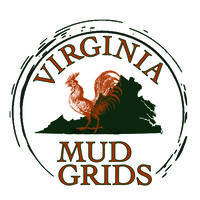- Hunt Line: 434-978-1107
- info@farmingtonhunt.org
- Charlottesville, VA
Introduction
Over the past fifty-five years since 1968, Farmington Hunt’s pack of hounds has undergone significant changes. These changes were primarily influenced by the preferences of the huntsmen who held the position and their choice of hounds for hunting. In this article, we will take a journey through time to explore the transformation of Farmington’s hounds.
The Original Farmington Pack
The original Farmington pack consisted of hounds drafted by local fox hunters to the newly established hunt club. These hounds were primarily of American lineage, with a touch of Bywaters’ bloodlines infused. Bywaters family, located in Northern Virginia, bred this American strain of hounds, which were highly prized by hunts favoring the American Hound. The hounds were known for their excellent sense of smell, distinctive cry, and ease of training. Grover Van Devender, Farmington’s first professional huntsman, played a pivotal role in blending these early drafts into a cohesive pack, which he hunted for approximately thirty years.
Changes in the 70s and 80s
Upon Grover’s retirement, Everett Sanner, his kennel huntsman, took over the position. However, due to health issues in the mid-seventies, Everett had to retire, leading to the search for a new huntsman. Jack Eicher, a native Virginian, applied for the job, having grown up hunting with the Casanova Hunt and the renowned Charles Tompkins. Jack remained true to his heritage by maintaining Farmington’s primarily American pack. He believed that older, experienced hounds were better suited for Farmington’s hunt country, which was facing challenges due to development and an increasing population.
The Turbulent 90s
In 1992, Jack Either abruptly left Farmington to take a job as a whipper-in for another hunt, taking many of Farmington’s best hounds with him. Despite the questionable act, Jill Summers, the Master of Farmington Hunt, decided not to engage in an ugly confrontation. Instead, she hired Butch Gray, who had been hunting an outlaw pack for Dr. Gable in the Middleburg area. Butch, like his predecessor Jack, had also grown up hunting with the Casanova Hunt and learned from the venerable Huntsman, Melvin Poe, of the Orange County Hunt.

Butch Gray’s Contribution
Upon Butch Gray’s arrival at Farmington, he faced the challenge of dealing with very few experienced hounds and a significant number of new entries. Despite the difficulties, Butch’s strategic breeding decisions significantly contributed to the pack’s composition. One notable hound, Daphne, was a crossbred hound with lineage traceable to Farmington’s earlier Bywaters hounds. Butch decided to cross Daphne with Millbrook Critic, a deep scenting hound known for steadiness and reliability. This crossing laid the foundation for an incredible pack of hounds.
John Tabachka’s Era
In 1996, John Tabachka became the huntsman, bringing with him experience as a whipper-in from the Green Spring Valley hounds. During John’s six-year tenure, the pack saw an equal number of American and Crossbred hounds. One particularly memorable hunting experience involved a dog fox who provided incredible sport, running for almost two hours across the Free Union country.
Daron Beeney’s Contribution
After John’s departure, Daron Beeney took over as the huntsman. His experience with English hounds influenced Farmington’s pack, introducing a stronger English influence. The addition of a prominent English bitch named Hasty further enriched the pack’s bloodlines. However, Daron faced challenges as the hunt country experienced an increasing number of coyotes.
A New Era with Matthew and Julie Cook
In 2012, Matthew and Julie Cook arrived from the Los Altos Hunt in California to lead Farmington’s pack. Over the past eleven years, the pack underwent a complete transformation, predominantly comprising American Foxhounds and a few Penn-Marydel hounds. Matthew’s decision to allow the pack to hunt coyotes has proven successful, providing superb sport for the members of Farmington Hunt Club.
Conclusion
Farmington Hunt Club takes pride in its pack of hounds, which has evolved over the decades under the guidance of various skilled huntsmen. From its roots in American hounds to the introduction of English influence and adapting to hunt coyotes, the pack continues to offer exceptional hunting experiences in the beautiful wooded hunt country.








